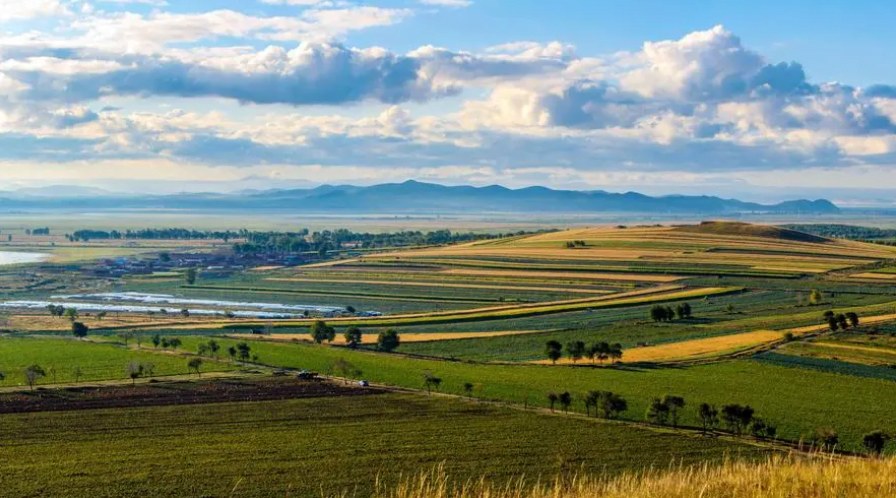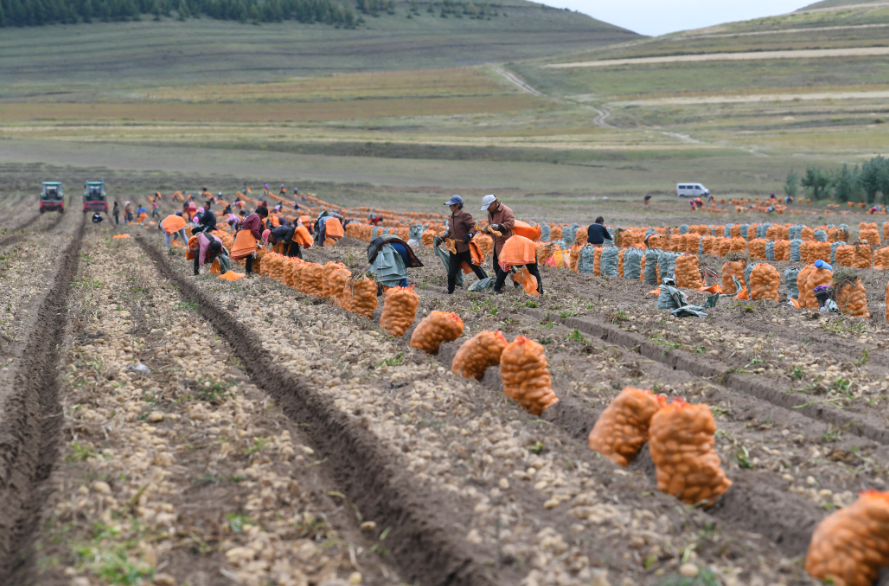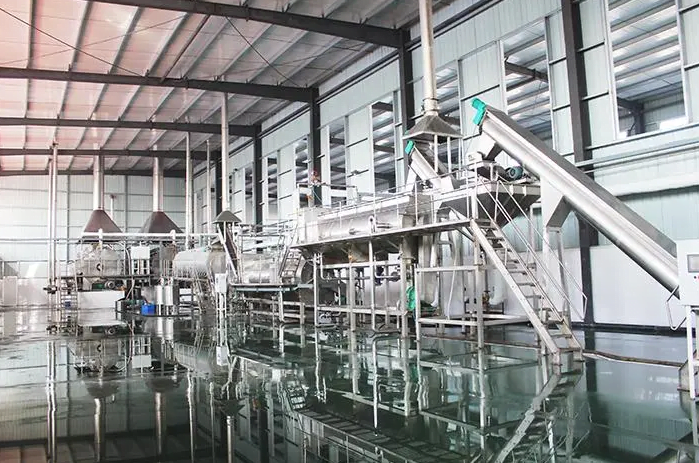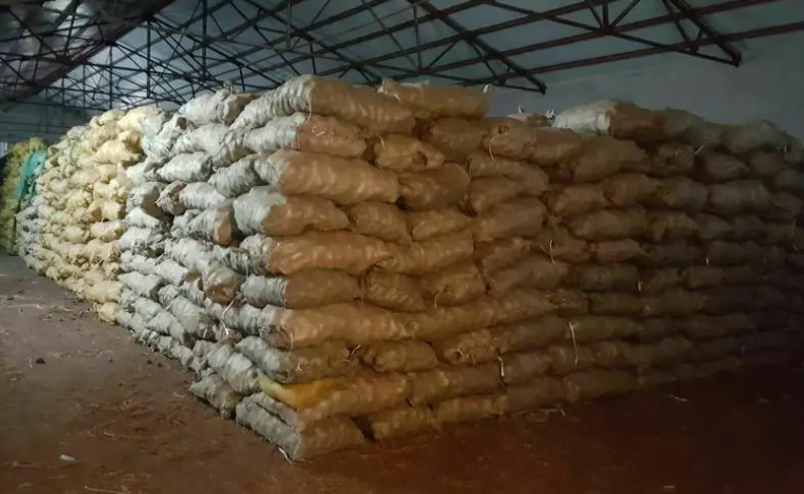Câu chuyện của chúng tôi
Câu chuyện và con người đằng sau mảnh khoai tây XION

Hàng năm, vào cuối tháng 9, Cao nguyên Bahang ở Trương Gia Khẩu, Hà Bắc trở nên nhộn nhịp với hoạt động. Một lượng lớn lao động tập trung về đây để tìm việc làm, và nhiều xe tải khác nhau xếp hàng gần nhau trên đường.
Nằm ở độ cao khoảng 1500 mét, khu vực này có sự chênh lệch nhiệt độ đáng kể giữa ngày và đêm. Đồng bằng cát màu mỡ ở đây tạo thành một trong những vùng trồng khoai tây quan trọng nhất của Trung Quốc. Không giống như khoai tây được trồng để làm rau, những thứ được sử dụng để chế biến thành vụn khoai tây mang lại lợi nhuận cao hơn cho nông dân. Ngoài ra, nhiều giống khoai tây phát triển tốt ở vùng này.
Hãy đến tháng mười, sự chênh lệch nhiệt độ lớn giữa ngày và đêm nhanh chóng dẫn đến sương giá trên mặt đất, cho mọi người thời gian thu hoạch chưa đầy một tháng.
Trong khi thu hoạch cơ học có hiệu quả cao, trong hầu hết các trường hợp, công nhân phân loại và thu hoạch khoai tây theo cách thủ công.

Phương pháp phân loại này có lợi cho việc chế biến khoai tây dạng mảnh, vì nó không chỉ nâng cao hiệu quả sản xuất mà còn duy trì chất lượng sản phẩm. Hơn thế nữa, phân loại khoai tây trực tiếp trên đồng ruộng giúp loại bỏ nhu cầu phân loại sau này, làm cho nó là phương pháp tiết kiệm nhất hiện nay.
Công nhân hiện trường tự tay phân loại khoai tây mà máy đào được, đóng gói những người nặng về 300 gram trở lên tách biệt với những cái nhỏ hơn. Mỗi túi đầy nặng ít nhất 15 kg, và mỗi lần họ đổ đầy túi, họ kiếm được 1.5 nhân dân tệ. Những công nhân lành nghề nhất có thể kiếm được tới 800 nhân dân tệ một ngày, mặc dù việc liên tục cúi xuống sắp xếp có thể khiến họ mệt mỏi.
Khoai tây mảnh XION không chỉ đại diện cho những người công nhân chăm chỉ trên đồng ruộng mà còn đại diện cho những người hiện đại, sản xuất công nghiệp thực phẩm quy mô lớn.
Một dây chuyền sản xuất mảnh khoai tây lớn là khoảng 150 mét dài, bao gồm nhiều giai đoạn của thiết bị xử lý, với gần như 80% công việc được tự động hóa hoàn toàn. Vì thế, khi bạn xem quá trình sản xuất qua kênh quan sát, bạn hiếm khi thấy nhiều công nhân làm việc; thay vì, bạn thấy những cỗ máy khổng lồ chạy liên tục.

Lớn hơn dây chuyền sản xuất khoai tây là kho bảo quản được kiểm soát nhiệt độ, nơi chứa khoai tây cần thiết cho sản xuất quanh năm, với công suất 50,000 tấn. Kho lưu trữ rộng lớn này bao gồm nhiều kho nhỏ hơn, nơi các nhà quản lý kiểm tra nguyên liệu khoai tây thô đầu vào và sắp xếp chúng vào các kho khác nhau dựa trên chủng loại và chất lượng của chúng.
Tỷ lệ khoai tây sống và khoai tây mảnh thành phẩm là khoảng 6:1. Vì thế, sau khi hạch toán lỗ hàng năm, 50,000 tấn khoai tây sống có thể sản xuất được khoảng 8,000 tấn khoai tây mảnh chất lượng cao. Tiêu biểu, Chất lượng và chủng loại khoai tây chiên tốt nhất được gửi đến các nhà máy thực phẩm nổi tiếng và cuối cùng trở thành sản phẩm bạn thấy trong siêu thị, chẳng hạn như chip tổng hợp, khoai tây nghiền, bánh quy, và hơn thế nữa.
Mảnh khoai tây có chất lượng thấp hơn thường được sử dụng làm thức ăn cho vật nuôi hoặc thức ăn cho cá.
Nói về điều này, bạn có thể yên tâm rằng XION chỉ cung cấp một loại khoai tây mảnh dùng cho thực phẩm, tương tự như những gì được cung cấp cho các công ty lớn như Pepsi ở Mỹ và Orion ở Hàn Quốc.

Khoai tây chiên XION ra đời từ một ý tưởng bất chợt.
Một ngày, chúng tôi nghĩ rằng chúng tôi có thể cung cấp những sản phẩm thô tốt nhất không chỉ cho các doanh nghiệp thực phẩm lớn này mà còn cho nhiều nhà máy khác có thể cần khoai tây mảnh chất lượng cao. Vì thế, chúng tôi quyết định thử.
Như vậy, Potatoflakes.com và XION ra đời, một công ty con từ Công ty TNHH DinWeys
Đó là chúng tôi. Không có câu chuyện cảm động hay kịch tính nào đằng sau nó, chỉ là một thành phố cao nguyên nhỏ bình thường cách xa hàng ngàn dặm, nơi một số người bình thường đang chăm chỉ làm những công việc bình thường này.